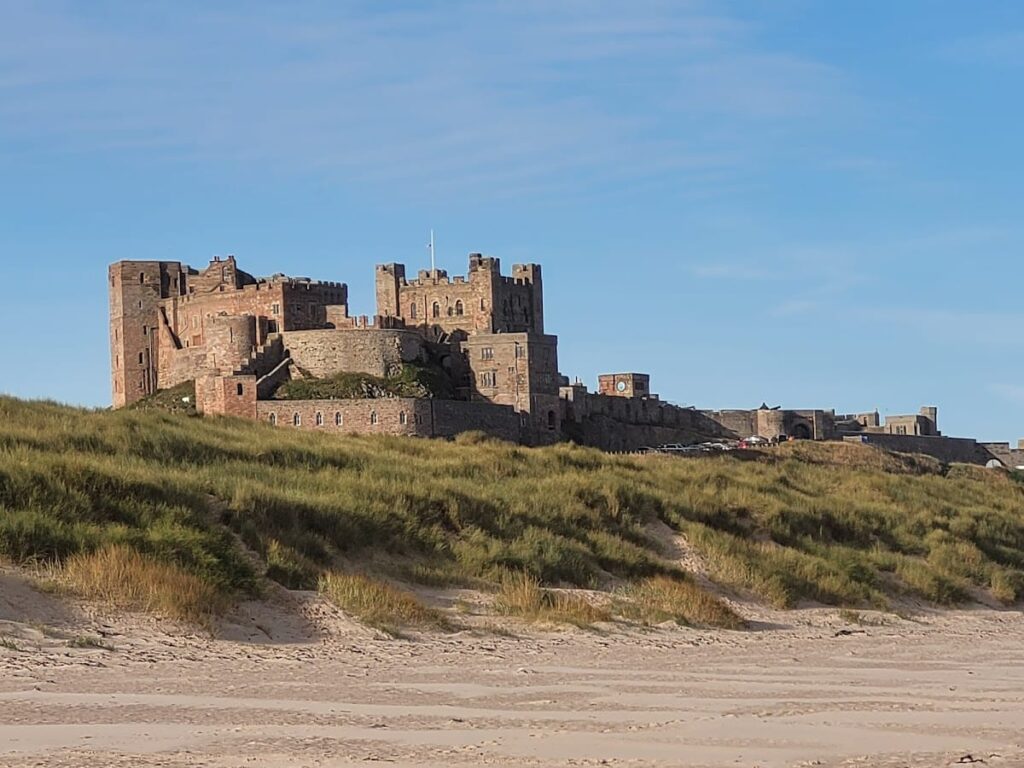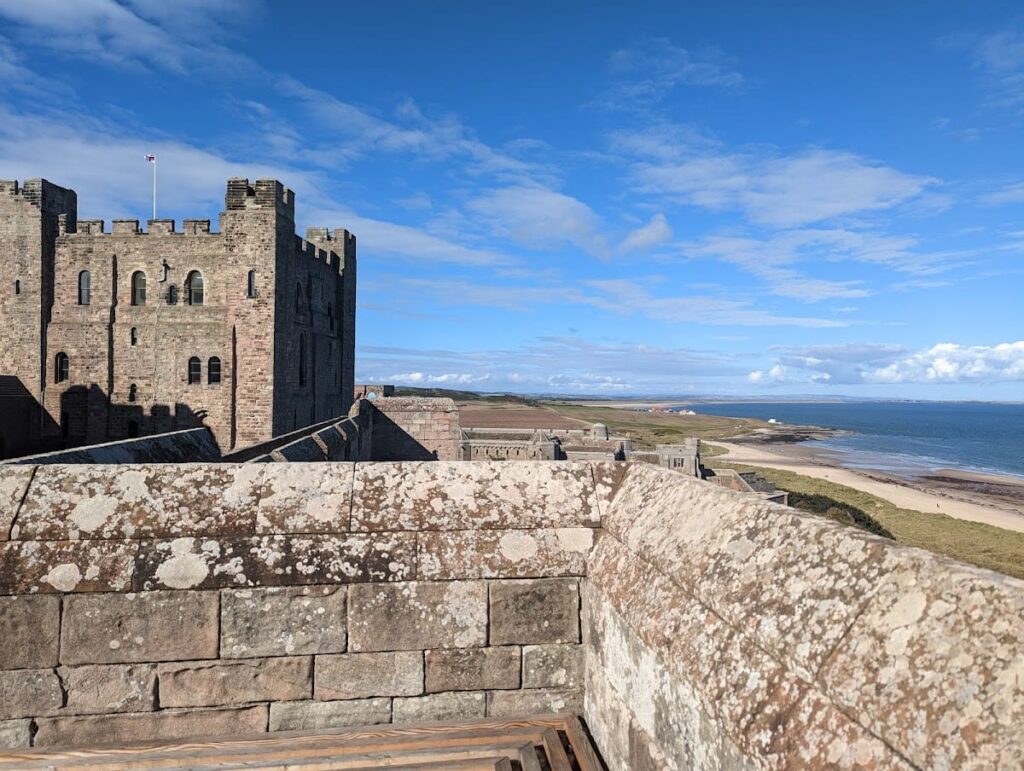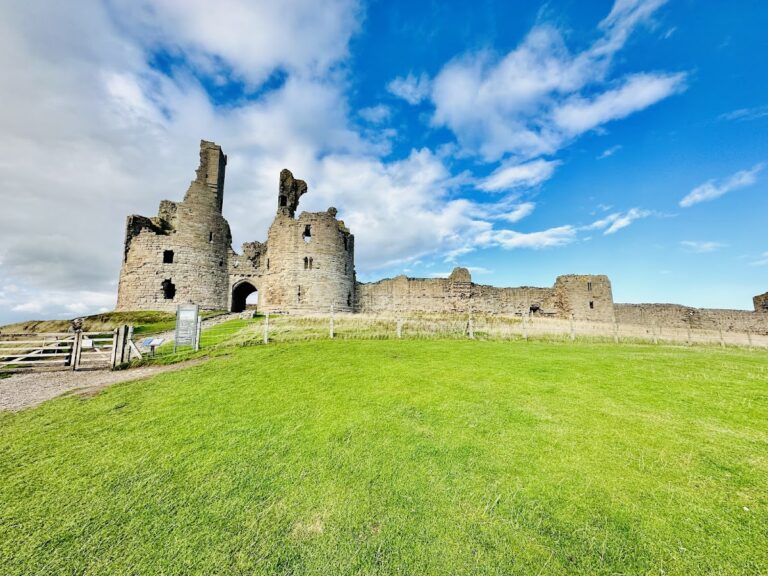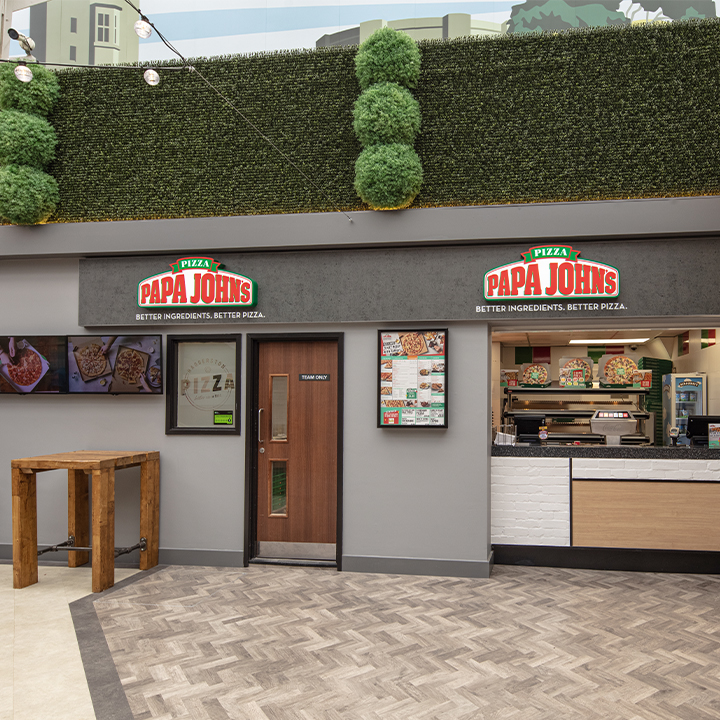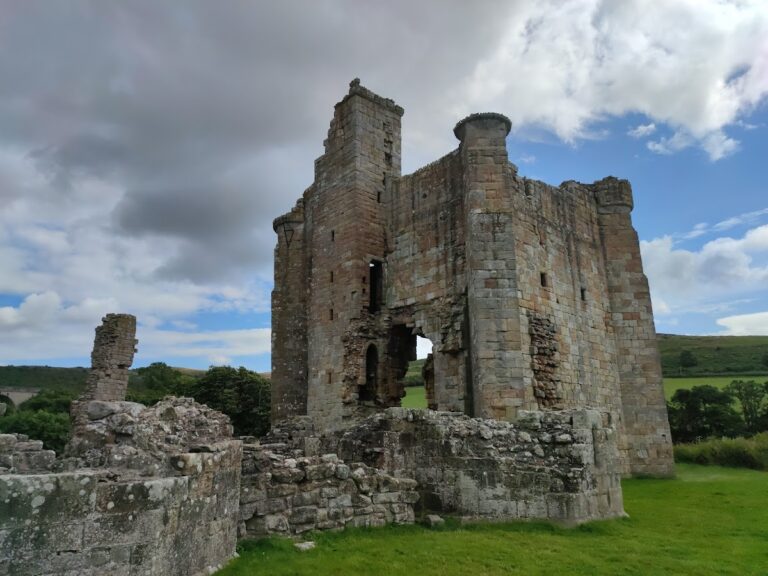Bamburgh Castle: A Historic Fortress in Northumberland, England
Visitor Information
Google Rating: 4.7
Popularity: High
Google Maps: View on Google Maps
Official Website: www.bamburghcastle.com
Country: United Kingdom
Civilization: Medieval European
Remains: Military
History
Bamburgh Castle stands on a volcanic dolerite crag in Bamburgh, Northumberland, England. Its origins trace back to a Celtic Brittonic fort known as Din Guarie, which may have served as the capital of the kingdom of Bernicia from around 420 to 547 AD. The site first appears in written records in 547 when King Ida of Bernicia captured it and made it his seat of power.
Control of the fort shifted between the native Britons and the Anglo-Saxons until 590, when the Anglo-Saxons secured permanent control. Around 600 AD, Æthelfrith, King of Bernicia, passed the fort to his wife Bebba, giving rise to the early name Bebbanburh, meaning “Bebba’s stronghold.” This name reflects the site’s importance in early medieval Northumbria.
The original fort was destroyed by Viking raiders in 993. Following the Norman Conquest, a new castle was built on the site, forming the core of the present structure. In 1095, during a rebellion led by Robert de Mowbray, the castle was besieged by King William II but resisted capture until Robert was taken prisoner. Robert’s wife defended the castle until she surrendered under threat to her husband’s life.
After this, Bamburgh became royal property. King Henry II likely commissioned the construction of the castle’s keep, completed by 1164. In recognition of loyal service, Richard I appointed Sir John Forster as the castle’s first governor after 1191. The castle also played a role in the 14th century when it held King David II of Scotland prisoner following the 1346 Battle of Neville’s Cross.
During the late reign of King John, control passed to Philip of Oldcoates. In 1464, amid the Wars of the Roses, Bamburgh endured a nine-month siege by Richard Neville, Earl of Warwick. This siege is notable as the first English castle to fall to artillery bombardment.
The Forster family maintained ownership or lease of the castle until the mid-1500s, after which it passed to Lord Crewe in 1704 following the bankruptcy of Sir William Forster. Trustees led by Thomas Sharp and later John Sharp undertook restoration efforts, refurbishing the keep and courtrooms and establishing a hospital on the grounds.
In 1894, Victorian industrialist William Armstrong purchased Bamburgh Castle and completed extensive restoration by 1904, including high-quality rebuilding using squared sandstone and ashlar masonry. During World War II, concrete pillboxes were installed in nearby sand dunes to defend the area. In 1944, a Royal Navy corvette was named HMS Bamborough Castle in honor of the site.
Today, the castle remains in the ownership of the Armstrong family. Archaeological excavations beginning in the 1960s uncovered significant artifacts such as the gold plaque known as the Bamburgh Beast and the Bamburgh Sword. Since 1996, the Bamburgh Research Project has focused on the castle and the nearby early medieval burial ground at Bowl Hole.
Excavations at Bowl Hole between 1998 and 2007 revealed the remains of 120 individuals dating to the 7th and 8th centuries. Analysis showed these people originated from diverse regions including Ireland, Scotland, Scandinavia, the Mediterranean, and North Africa. In 2016, these remains were respectfully reinterred in the crypt of St Aidan’s Church in Bamburgh, where they remain accessible through a small gate.
Remains
Bamburgh Castle is built atop a black volcanic dolerite crag, part of the Whin Sill geological formation. The core of the current castle is the Norman structure erected after the Viking destruction of the original fort in 993. The keep, likely constructed under King Henry II and completed by 1164, remains a prominent feature.
The castle’s construction primarily uses squared sandstone and ashlar masonry, especially following the extensive restoration by architect C.J. Ferguson between 1894 and 1904. These restorations transformed the castle from a ruinous state into a habitable and well-preserved structure. The castle is now divided into apartments.
Defensive features include the medieval keep and courtrooms, which were refurbished in the 18th century. During the Second World War, concrete pillboxes were added to the nearby sand dunes to strengthen coastal defenses. These pillboxes remain as part of the site’s military heritage.
Within the castle’s laundry rooms, the Armstrong and Aviation Artefacts Museum displays engines, artillery, weaponry, and aviation items from both world wars, linking the site’s long military history to more recent conflicts.
Archaeological discoveries at Bamburgh include the gold plaque known as the Bamburgh Beast, a rare and finely crafted artifact, and the Bamburgh Sword, both dating to the early medieval period. These finds highlight the castle’s importance during the Anglo-Saxon era.
The Bowl Hole burial ground, located in the sand dunes south of the castle, is an important early medieval cemetery associated with the fortress. Excavations there uncovered numerous burials with diverse origins, reflecting the wide connections of the community around Bamburgh.
The remains excavated at Bowl Hole were reinterred in the crypt of St Aidan’s Church in Bamburgh in 2016. This crypt is accessible to visitors through a small gate, preserving the link between the castle, its early medieval inhabitants, and the local church.
